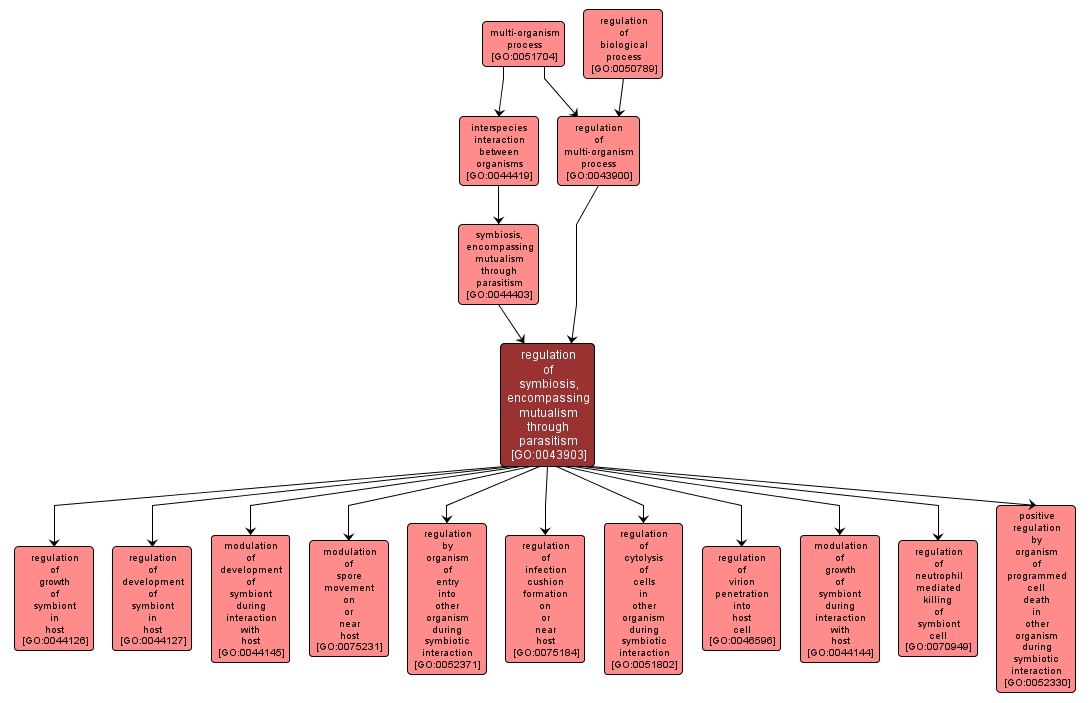GO TERM SUMMARY
|
| Name: |
regulation of symbiosis, encompassing mutualism through parasitism |
| Acc: |
GO:0043903 |
| Aspect: |
Biological Process |
| Desc: |
Any process that modulates the frequency, rate or extent of symbiosis, an interaction between two organisms living together in more or less intimate association. |
|

|
INTERACTIVE GO GRAPH
|














